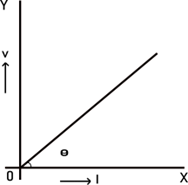Home
Tutorial's
Image collection
Calculator
Projects
MCQ's
3d Models
Invention Hub
How it works
Download Our app
Module 6: Ohm's Law
Ohms Law states that at a constant temperature, the current (I) flowing through the conductor is directly proportional to the voltage applied across its ends and inversely proportional to the resistance of the conductor. Mathematically expressed as,
V=IR (assuming constant R)

The graph is drawn between the applied voltage and current; it will be the straight line passing through the origin as shown in the above fig. The slope of the graph gives the resistance, i.e., tan(θ)=V/I=R
6.1:Limitations of Ohm's Law
Ohm's law cannot be applied in all situations. There are some elements that do not obey law. The following are the limitations of Ohm's law.
1. It is not applicable for nonlinear devices such as diodes, zener diodes, voltage regulators, etc.
2. It cannot be applied to circuits consisting of electronic tubes or transistors because such elements are not bilateral.
3. It cannot be applied to non-metallic conductors such as silicon carbide, in which V-KIm where K and m are constants and m is less than unity.
4. It cannot be applied to vacuum- and gas-filled devices as the V-I graph is not a straight line.
5. It cannot be applied to those electrolytes in which gases are liberated on the electrodes.
6. It cannot be applied to those conductors whose temperature changes due to the flow of current through them. For changing temperature, the VI graph is not straight line 7. It cannot be applied to arcing devices.
7. Appliances and semi-conductors like metal rectifiers, whose functionality depends on the direction of current, are not eligible for its use.
Related articles
